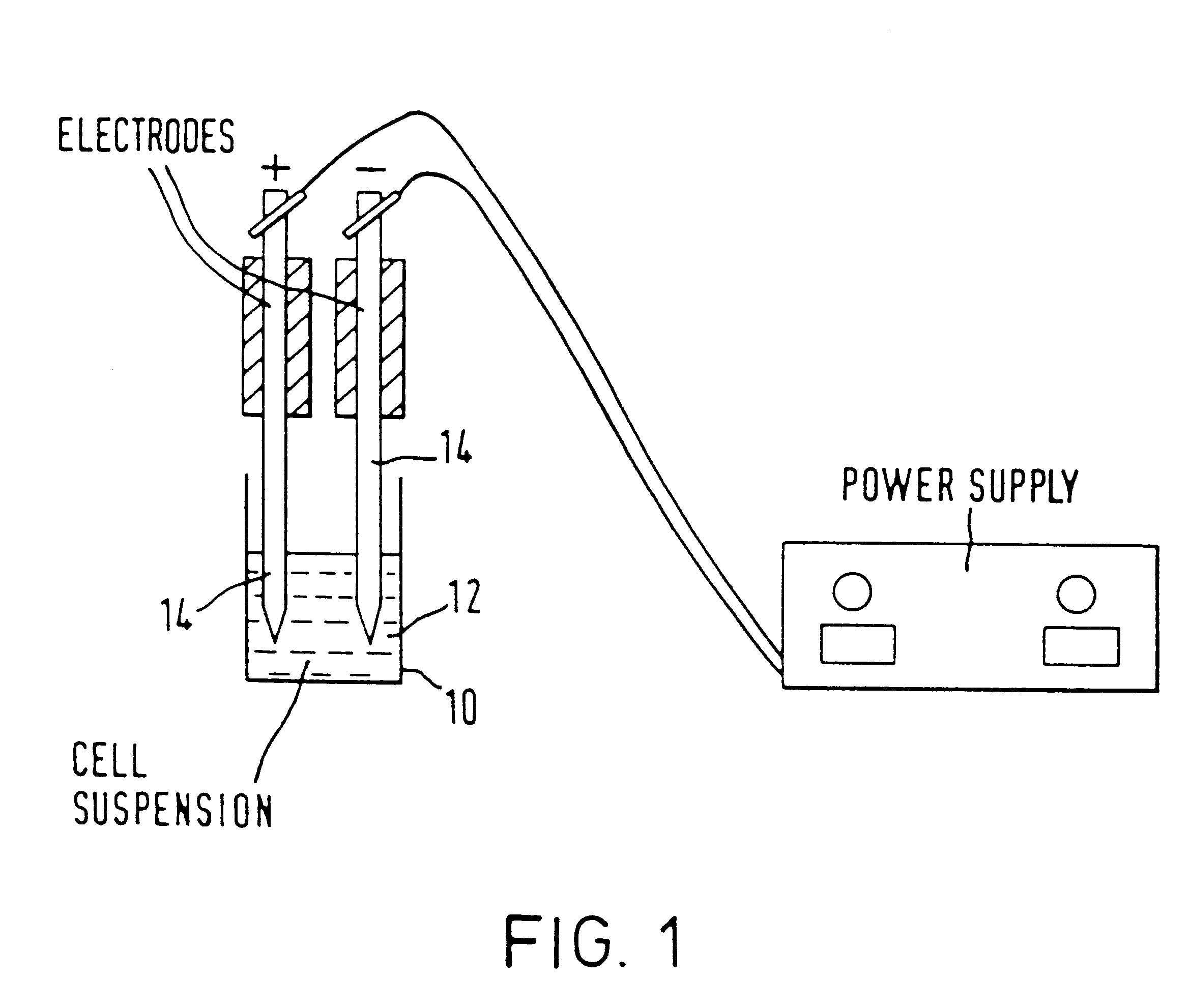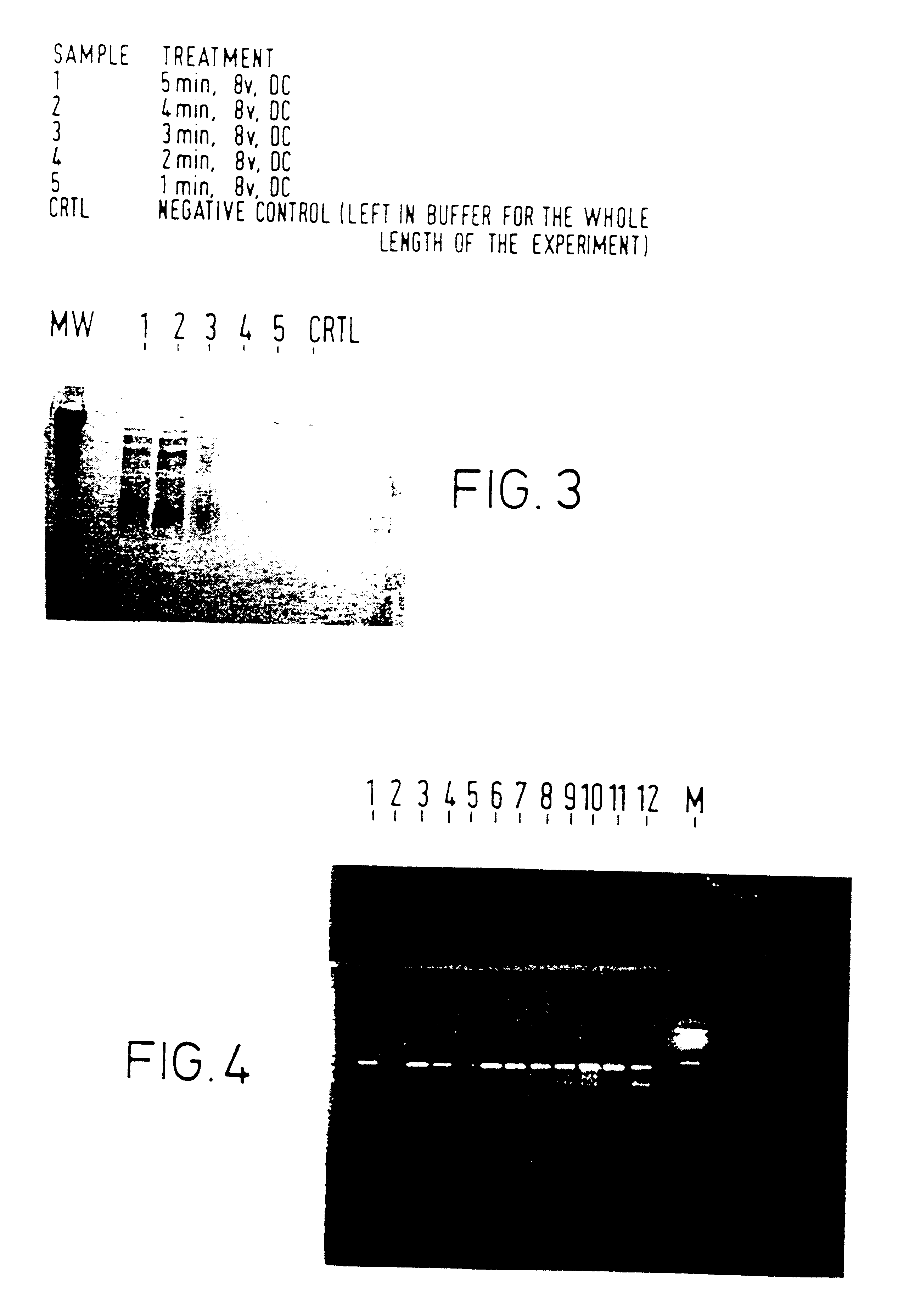Release of intracellular material and the production therefrom of single stranded nucleic acid
a single-stranded nucleic acid, intracellular technology, applied in the direction of instruments, liquid/fluent solid measurements, enzymology, etc., can solve the problems of time-consuming and labor-intensive density gradient and phenol/chloroform extraction processes, and all these techniques have limitations
- Summary
- Abstract
- Description
- Claims
- Application Information
AI Technical Summary
Benefits of technology
Problems solved by technology
Method used
Image
Examples
example 2
The same experimental conditions were used as in Example 1 above but using reduced electrocution times at 8 volts. This resulted in the release of protein from the cell even after only 1 minute.
example 3
In order to demonstrate DNA release and to increase the sensitivity of detection we assessed cell lysis by amplifying DNA using the polymerase chain reaction.
Escherichia coli, strain DH5.alpha.F (Gibco, BRL) were transformed with pBR322 (Sigma) and grown overnight in Luria Bertani medium containing 100 .mu.gml.sup.-1 ampicillin. The average cell density achieved was 1.times.10.sup.8 cells ml.sup.-1. Cells were harvested by centrifugation at 10000 rpm for five minutes and washed in PCR buffer (10 mM Tris, 50 mM KCl, 2.5 mM MgCl.sub.2, pH 8.3). Cells were resuspended in PCR buffer at a concentration five times that of the original. Positive control samples were treated by boiling for 5 minutes.
Two carbon probe electrodes were placed into the sample and 4-8 V (d.c.) was applied (power supply; Thurlby 30V, 2A) for between 0.5 to 2 minutes. The cell debris was pelleted and supernatants were analysed by PCR. PCR conditions were as follows; 0.1 .mu.l / ml of sample in PCR buffer (as above), ...
PUM
| Property | Measurement | Unit |
|---|---|---|
| Electric potential / voltage | aaaaa | aaaaa |
| Electric potential / voltage | aaaaa | aaaaa |
| Electric potential / voltage | aaaaa | aaaaa |
Abstract
Description
Claims
Application Information
 Login to View More
Login to View More - R&D
- Intellectual Property
- Life Sciences
- Materials
- Tech Scout
- Unparalleled Data Quality
- Higher Quality Content
- 60% Fewer Hallucinations
Browse by: Latest US Patents, China's latest patents, Technical Efficacy Thesaurus, Application Domain, Technology Topic, Popular Technical Reports.
© 2025 PatSnap. All rights reserved.Legal|Privacy policy|Modern Slavery Act Transparency Statement|Sitemap|About US| Contact US: help@patsnap.com



